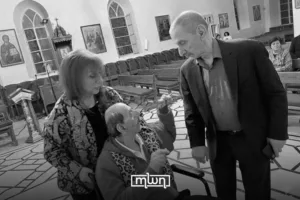Rabat – In a world dominated by digital communication, the art of calligraphy stands out as a testament to the enduring power of human expression through a pen. Today, calligraphy is considered as an art that combines elegance of design and fluidity of language.
Among its various range of styles, Islamic calligraphy stands out as a jewel in the crown. Aside from its role as a means of communication, it has also been deeply intertwined with Islamic culture, spirituality, and also aesthetics.
The art of Islamic Calligraphy can be traced back to the early days of Islam, when written words held immense significance for the spread of the Islamic Empire. As the latter expanded, a wide range of styles was born, each with its own characteristics :

Thuluth is an elegant variety of Islamic calligraphy which emerged in the fifteenth century. It was used in medieval times on Mosque decoration or for Surahs writings.

The Tawqi’ is a smaller version of the Thuluth style. It was mostly used in official documents in the Ottoman Empire.
The Naksh was founded within the first century of the Islamic calendar, and it is often used in administrative documents, transcribing books, including the Holy Qur’an.
The Riqaa’ was used for nonreligious books and for private correspondence only. It was often used during the Ottoman Empire, and it is now the most common handwritten script among Arab countries.
The Muhaqqaq, often used for Masahif (loose sheets of Quranic text), is considered as one of the most beautiful yet difficult styles to execute.

The Rayhani is considered as a variant of Muhaqqaq and is used in Perso-Arabic writings.
While deeply rooted in history, Arabic calligraphy continues to evolve today as it is a bridge between the past and the present, reminding us of Arabic speaking countries’ rich cultural heritage.
Read also: Arabic Calligraphy Enlisted in UNESCO’s Intangible Cultural Heritage List
















